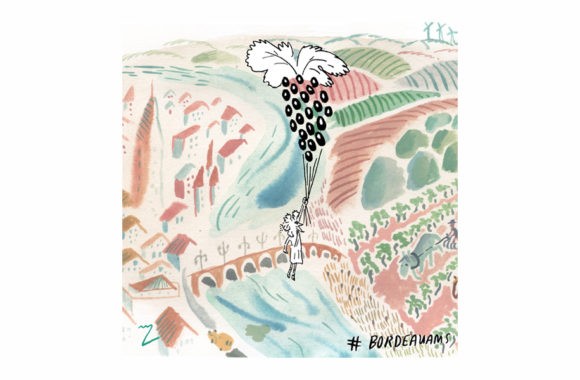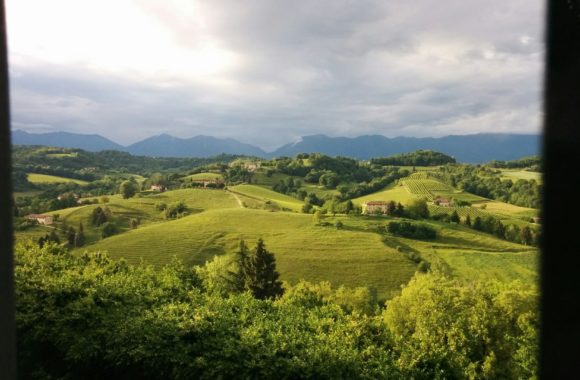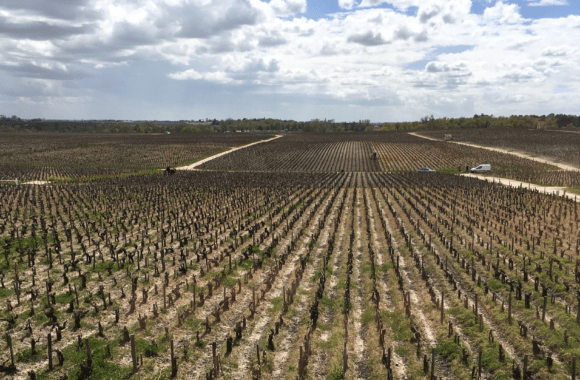
The ‘Grand Cru’ of Olive Oil – Morisfarms
· Jeroboams Jeroboams on
Picture the most idyllic vista of Tuscany, and what comes to mind? A vineyard, naturally. Perhaps a cypress tree-lined road winding gently through the rolling hills. And maybe, in the distance, an ancient olive grove, dotted with gnarly, twisting trees as old as those hills. In Tuscany, wine and olives go together as naturally as Chianti and fava beans, as one infamous epicure once said. From Montalcino to Montepulciano, many wineries produce an olive oil alongside their wine – some as a ‘nice-to-have’ bonus for the gift shop, others as a serious enterprise, practised as rigorously as the winemaking.
So what makes a good olive oil? Firstly, provenance. Just as with wine, it matters where the olives are grown, who by, and how. And while in more volume-led regions, oils are often blended together from multiple growers, in Tuscany (and Umbria, among other spots), you tend to find more individual producers, who can control the process from tree to bottle.
In truth, olive oil is made all over Italy. Indeed, Puglia, in the south, is the country’s most prolific region, responsible for around 40% of its output. And Spain, for that matter, is the world’s largest overall producer. In both cases, however, production tends to be led by quantity over quality. In Tuscany, by contrast, quality is everything.
That process – and the efficiency of it – is integral to the final product. Like grapes, olives are very susceptible to oxidation; as soon as they are picked, they begin losing those all-important polyphenols that drive flavour and freshness. As a result, to ensure optimum quality, olives need to be pressed as soon as possible after harvest (in a matter of hours). Fruit being picked from all corners of a region and then shipped to a pressing factory is likely to be of less intensity than that of a single estate which is then pressed on-site.
Among such producers, Morisfarms is a rarity in having produced olives before it made wine (Feudo Disisa, in Sicily, is another). The Moris family moved to Tuscany 300 years ago, and, somewhat perversely, chose to settle in Maremma. While today Maremma is one of Italy’s more glamorous wine regions, back then it was a mosquito-infested swampland – ripe for agriculture, but good for little else save the spread of malaria, which only died out in the 1950s. But the Moris family were convinced of its potential, and built up two sizeable farms, growing coriander, wheat and olives, before slowly developing a viticultural focus which today yields a broad range of wines, notably its Sangiovese-based Maremma and Morellino di Scansano.
Its Extra Virgin Olive Oil, sourced from the estate’s Leccino, Frantoio and Moraiola trees, is cold-pressed within 24 hours of harvest. And herein lies another nuance of olive production. Just as with its notoriously bewildering array of grape varieties, so Italy is more diverse than other countries when it comes to types of olive trees. For grape varieties, read cultivars, of which the country boasts somewhere in the region of 600 (for context, there are a total of around 800 worldwide, with Spain relying on a mere handful for its massmarket production). And just as Vermentino is different to Verdicchio, so cultivars provide significant contrast in terms of flavour profile and suitability as to where they’re grown.
Some have become international in profile, able to adapt to terroirs, and prevalent everywhere from Australia to California; the Cabernet Sauvignons of the olive world, if you will. Others don’t travel so well, and, as with Sangiovese or Nebbiolo, largely flourish only in certain parts of Italy. The best ones, it seems, favour a certain terroir, and need to be planted in the right place.
Dry farming remains the favoured method of cultivation, but such has been the impact of drought in recent years that producers in some regions are having to rethink. Drought dramatically reduces crop size (one of the reasons why prices have recently skyrocketed) and with temperatures getting hotter and hotter in places like Sicily and Calabria, more and more producers are considering irrigation (another element that works in favour of the slightly cooler Tuscany and Umbria).
Such a measure is a perfectly valid – if expensive – option. Unlike with wine, there are relatively few rules as to what you can and can’t do when it comes to production, and certainly little by way of regional diktat. Extra Virgin Olive Oil sits clearly at the top of the quality pyramid, and is really the only rendering worth the candle. Essentially this is the first press, moving through the mill to be cold-pressed within hours of being picked, and unrefined. It should be free of defects, with an acidity level lower than 0.8%. Beyond that, an oil’s qualification as Extra Virgin depends entirely on its taste, with the certification being conferred by the European Commission’s Olive Oil Council (though that hasn’t stopped a wave of lesser-quality oils infiltrating the market, fraudulently labelled as Extra Virgin, or as from Tuscany or Umbria when in reality they come from Morocco or Tunisia).
There is one more reason why Tuscany’s more boutique producers are so coveted. Just like the raw materials, good olive oil is at its freshest and most vivid immediately after harvest. Unlike wine, olive oil does not improve with age – in general, the spicy, peppery notes will mellow into something more mild and fruity over time, with most having a maximum shelf-life of 18 months. And once opened, it starts oxidising, with the brightest flavours fading after a couple of months.
With that in mind, olive oil connoisseurs tend to stock up in the autumn and winter months, immediately after harvest, when the new releases hit the shelves. But these are not always easy to find. Only the smaller producers tend to state the year of bottling on the back label – it’s not something you’ll see on the bottles of the big brands.
Among the other Tuscan wineries to look for this season, as well as Morisfarms, are Casaloste in Chianti, Podere Le Ripi in Montalcino and even the vaunted Ornellaia in Bolgheri. The latter tends to be harvested in October, bottled in November and on the shelves in December. And yes, it’s a little more affordable than its wine…







